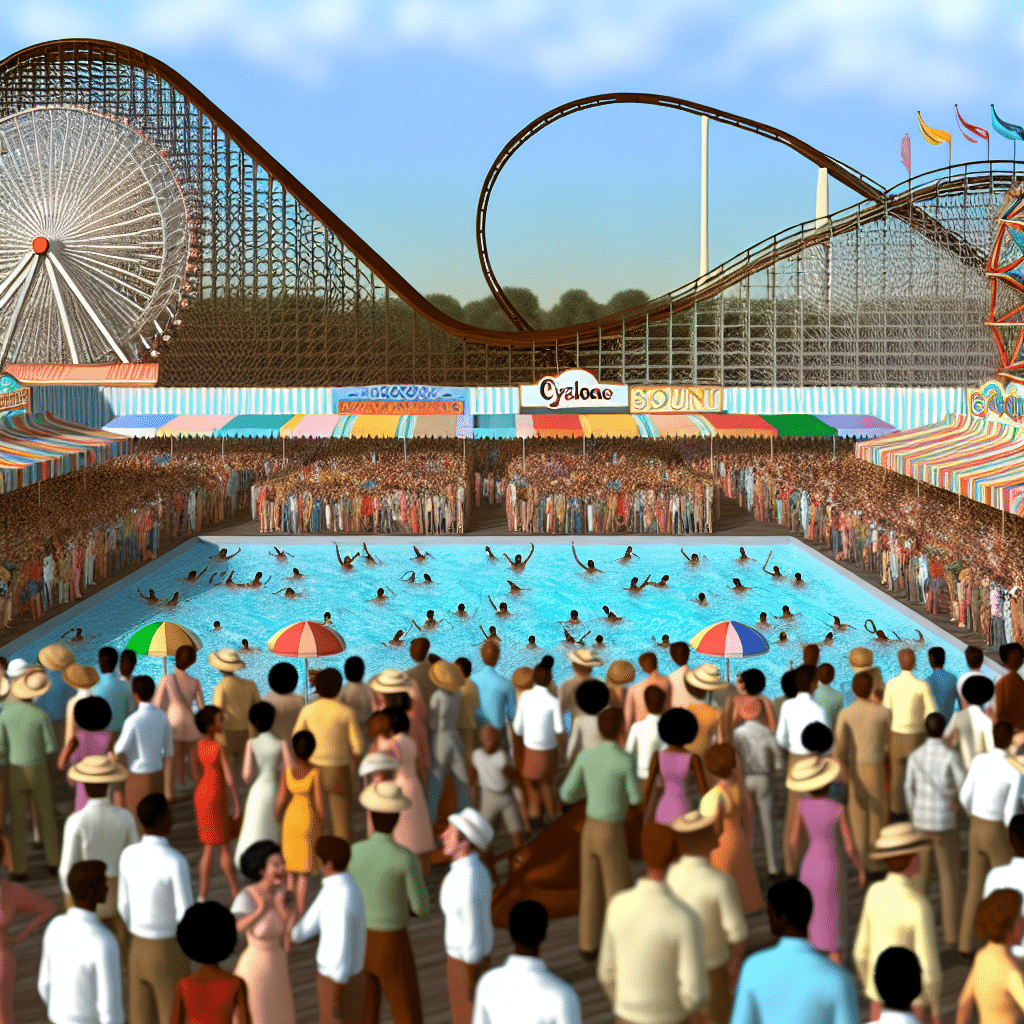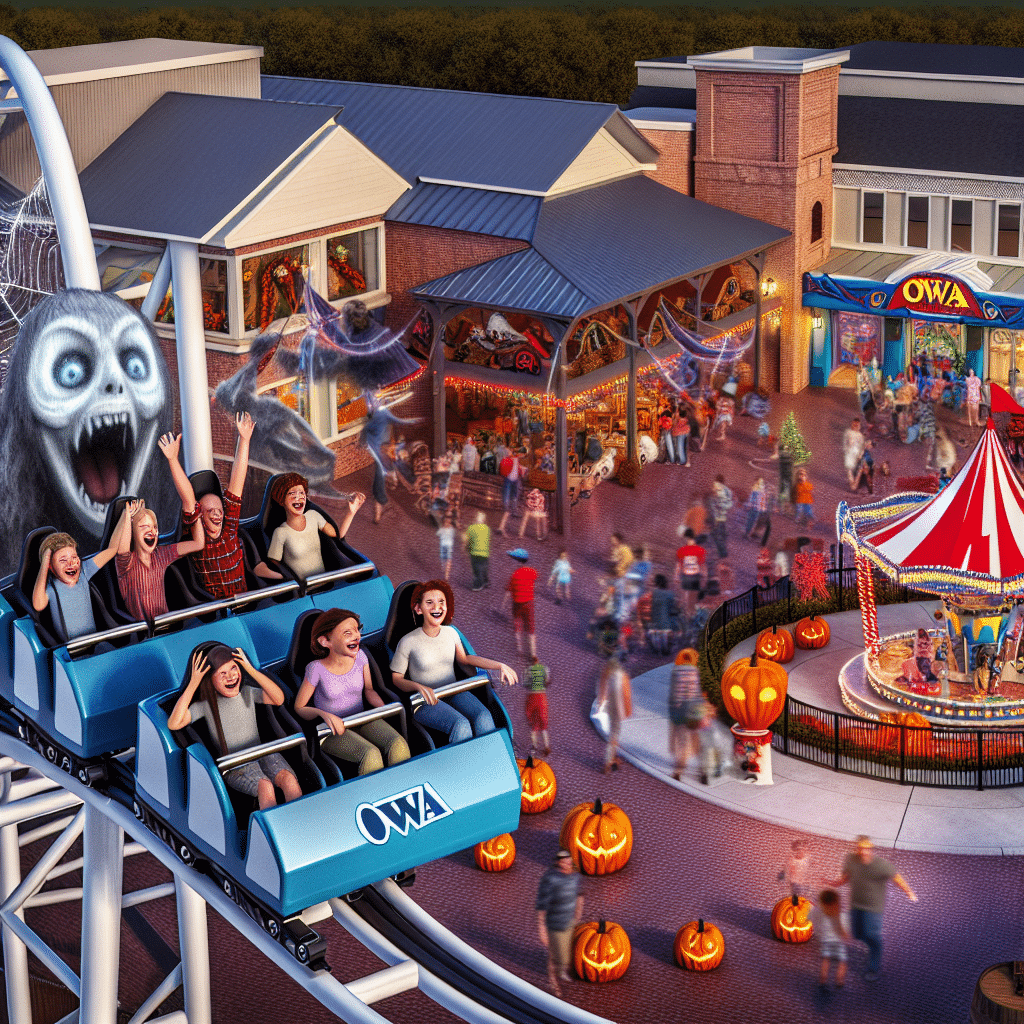Imagine a place where laughter echoed through the air, thrilling rides spun visitors in joyous frenzy, and the scent of popcorn and cotton candy wafted through the breeze. This magical place was none other than Palisades Amusement Park, an iconic landmark in American history. Nestled in Cliffside Park and Fort Lee, New Jersey, Palisades Amusement Park was more than just a recreational site; it was a cultural phenomenon that captivated and enchanted visitors for nearly seven decades.
What Made Palisades Amusement Park So Special?
Palisades Amusement Park was a hotspot of entertainment that drew crowds from all over, thanks to its irresistible charm and diverse array of attractions. Opening in 1898, it quickly established itself as a premier destination for thrill-seekers and families alike. But what exactly made it so special?
A Kaleidoscope of Attractions
From its earliest days, Palisades Amusement Park boasted an impressive roster of rides and attractions. The park’s roller coasters—such as the Cyclone, the Tornado, and the Wild Mouse—were nothing short of legendary, inducing shrieks of delight and terror. Alongside these heart-pounding rides, Palisades featured gentler options like the Ferris wheel and the carousel, ensuring that there was something for everyone.
Another iconic feature was the saltwater swimming pool, which was among the world’s largest at the time. On hot summer days, it was a refreshing retreat that catered to swimmers of all ages. Concerts, firework displays, and various live performances further enriched the park’s entertainment offerings, creating a vibrant atmosphere that was impossible to resist.
A Cultural Melting Pot: Why Did Palisades Amusement Park Matter So Much?
Although the rides and attractions were the park’s main draw, the cultural significance of Palisades Amusement Park was profound. It was a space where people from all walks of life could come together to share joy and create memories. This communal aspect of the park is a testament to its enduring legacy.
The Music Scene
Music was a vital element of Palisades Amusement Park, contributing to its dynamic and festive spirit. The park’s famous “Palisades Park” song, recorded by Freddy Cannon in 1962, reached No. 3 on the Billboard Hot 100 chart, immortalizing the park in pop culture. The park often hosted live performances by prominent artists, making it a key venue in the music world.
Television Exposure
Television also played a significant role in popularizing the park. The late 1950s and 1960s saw Palisades Amusement Park featured in various TV shows and advertisements, adding to its allure. Programs like “The Soupy Sales Show” brought the park into American living rooms, enticing families to visit and experience the magic firsthand.
The Decline and Closure of Palisades Amusement Park: What Led to Its End?
Despite its glory and fame, Palisades Amusement Park faced challenges that eventually led to its closure in 1971. Economic issues, increased competition from other entertainment venues, and changing social dynamics all played a role in its decline.
Shifts in Entertainment Trends
In the mid-20th century, the rise of television and the growing popularity of indoor entertainment venues like movie theaters and shopping malls began to overshadow outdoor amusement parks. People’s leisure habits were shifting, and Palisades struggled to keep pace with these changes.
Urban Development Pressures
The lure of real estate development became too significant to ignore. As the area around Palisades Amusement Park grew in value, developers saw an opportunity to transform the land into highly lucrative residential and commercial properties. This economic pressure ultimately led to the decision to close the park and sell the land.
The Legacy of Palisades Amusement Park: Why Does It Still Matter Today?
Though the gates of Palisades Amusement Park have been closed for over half a century, its legacy endures. For those who experienced its magic, the memories remain vivid and cherished.
Nostalgia and Cultural Impact
Palisades Amusement Park has left an indelible mark on American culture. It’s often cited in nostalgic discussions and articles, capturing the imaginations of those who visit its story through photographs, postcards, and memorabilia. For many, the park symbolizes a simpler, joyous time in American history—a golden era of carefree fun and community spirit.
Inspirations and Tributes
Even in its absence, Palisades continues to inspire. Modern amusement parks often pay homage to it through retro-themed attractions and events. Documentaries and books keep its story alive, educating new generations about the park’s significance. The park remains a beloved chapter in the history of American entertainment, a testament to the power of shared joy and community.
In conclusion, Palisades Amusement Park was more than just an amusement park; it was a cultural landmark that brought people together through fun, music, and unforgettable experiences. Though it may no longer physically exist, its spirit and influence continue to resonate, reminding us of the timeless magic that places like Palisades can offer.




